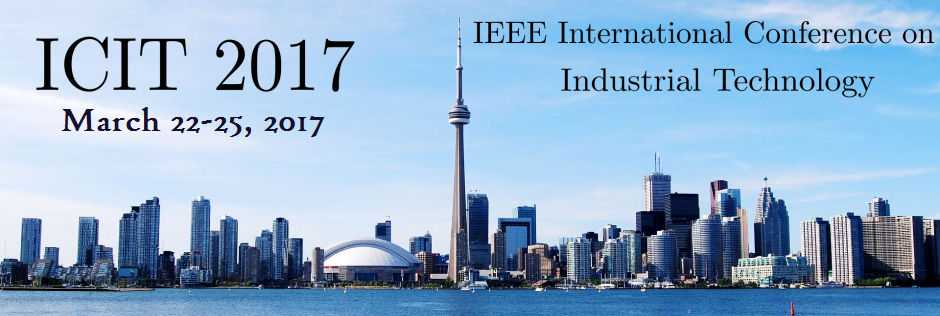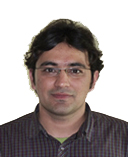Tiny Energy-Harvesting Piezoelectric Chargers
Abstract: Wireless microsensors and other miniaturized electronics cannot only monitor and better-manage power consumption in emerging small- and large-scale applications (for space, military, medical, agricultural, and consumer markets) but also add energy-saving and performance-enhancing intelligence to old, expensive, and difficult-to-replace infrastructures and tiny contraptions in difficult-to-reach places (like the human body). The energy these smart devices store, however, is often insufficient to power the functions they incorporate (such as telemetry, interface, processing, and others) for extended periods. Still more, replacing or recharging the batteries of hundreds of networked nodes is costly, and invasive in the case of the human body. Harvesting ambient kinetic energy in motion to continually replenish a battery is therefore an appealing alternative, even if relevant technologies are still the subject of ardent research today. This talk illustrates, assesses, and compares the state of the art in miniaturized piezoelectric chargers that draw kinetic energy from motion to charge a battery.
Speaker Bio: Prof. Gabriel A. Rincón-Mora worked for Texas Instruments in 1994-2003, was an Adjunct Professor at Georgia Tech in 1999-2001, and has been a Professor at the Georgia Institute of Technology since 2001 and a Visiting Professor at National Cheng Kung University in Taiwan since 2011. He is a Fellow of the IEEE and a Fellow of the IET, and his scholarly products include 9 books, 4 book chapters, 38 patents, over 170 articles, over 26 commercial designs, and over 125 international speaking engagements. Georgia Tech inducted him into the Council of Outstanding Young Engineering Alumni in 2000 and Hispanic Business magazine named him one of “The 100 Most Influential Hispanics” in 2000. Other awards include the National Hispanic in Technology Award from the Society of Professional Hispanic Engineers, the Charles E. Perry Visionary Award from Florida International University, a Commendation Certificate from the Lieutenant Governor of California, the IEEE Service Award from IEEE CASS, the Orgullo Hispano and the Hispanic Heritage awards from Robins Air Force Base, an IEEE Certificate of Appreciation from IEEE CASS, and two Thank a Teacher Certificates from the Georgia Institute of Technology. He has served as Distinguished Lecturer, General Chair and Co-Chair, Technical Program Chair and Co-Chair, Associate Editor, Guest Editor and Co-Editor, Chapter Chair and Vice-Chair, International Liaison, Steering Committee Member, and Advisory Panel Member on multiple occasions for IEEE and other international organizations.
Dynamic Virtual Organizations Constriction Framework
Abstract: Business Opportunity (BO) needs dynamic business collaboration and rapid distributed solution. Legacy systems are not enough to cope with it, this raises the need to address diverse aspects of distributed computing concepts that support the various capabilities. One of the main trends of distributed computing is what is called Collaboration Network Organization (CNO). Unfortunately, there is a lack of the countries that are using DVO concepts (i.e., the number of projects in this context is limited). Dynamic Virtual Organizations Constriction Framework (DVOCF) is theoretical description framework to create Dynamic Virtual Organizations (DVO) at the knowledge level. DVOF has been utilized CommonKADS knowledge engineering methodology to model DVO. By utilizing CommonKADS the knowledge of the problem can be structured in three stages context level, concept level and artifact levels DVOF has been identified three models namely 1) “New Federated Collaborative Networked Organization Model (FCNOM)”, 2) “Virtual Business Collaboration Knowledge Model (VBCKM) and 3) “Collaboration Network Organization Grid-Cloud Convergence Architecture (CNOGCA) Based on Open Grid Services Architecture (OGSA). Each model is composed by an ontology that describes each of the entities covered by the model and where applicable a set of design patterns.
Speaker Bio: Dr. Morcous main research interests lie with the knowledge modeling, sharing and reuse, intelligent information retrieval, Software Engineering, Software requirements engineering, Service Oriented Architecture (SOA), Virtual Organizations, Grid & Cloud Computing and Green Computing. more about his research interests He has served as an invited member of the technical program committee of several IEEE conferences. He acts as a reviewer for the international conferences and journals. He has published numerous scientific articles in Arabic language : magazine, Al-Ahram URL: http://aitmag.ahram.org.eg/OuterWriter/4063.aspx He has presented many tutorials wordlwide, you can find more details at http://markyassa.weebly.com/invited-presentations.html He started a call of research team for a project called “Ontology and Knowledge Sharing in E-Health” https://www.researchgate.net/project/Ontology-and-Knowledge-Sharing-in-E-Health
Internet of Things for Sustainable Future Smart Buildings
Abstract: IoT is expected to offer advanced connectivity of devices, systems, and services that goes beyond machine-to-machine communications (M2M) and covers a variety of protocols, domains, and applications. Smart city is first and foremost a city – one that pushes the quality of resource management and service provision to the limit possible at the time. In such an integrated understanding of the smart city concept, smart city projects are part of a general concept of city modernization. Since the hype surrounding IoT is in the market, it is expected that exploiting IoT practices can play a key role in the development of sustainable future smart buildings that are energy efficient, flexible and equipped with advanced control systems to provide the best experiences for tenants. Therefore, the Internet of Things (IoT) is advancing a new breed of smart buildings that are better aligned with the priorities of property owners, managers and communities.
Speaker Bio: Muhammad Alam (PhD., Senior Researcher) holds a PhD degree in computer science from University of Aveiro, Portugal (2013-14). In 2009, he joined the Instituto de Telecomunicações – Aveiro (Portugal) as researcher and completed his Ph.D from University of Aveiro with a specialization in Inter Layer and Cooperative Design Strategies for Green Mobile Networks. He has participated in several European Union FP7 projects such as Hurricane, C2POWER, ICSI, PEACE and Portuguese government funded projects such SmartVision. Currently, he is working as senior researcher at Instituto de Telecomunicações and participating in European Union and Portuguese government funded projects. His research interests include IoT, Real-time wireless communication, 5G, Vehicular networks, Context-aware systems and Radio resource management in next generation wireless networks. He is the editor of Book “Intelligent Transportation Systems, Dependable Vehicular Communications for Improved Road Safety”. He is the author of several journal and conference publications as well as book chapters. He is also the TPC member and reviewer for a number of reputed conferences, journals, and magazines. He is IEEE and IEEE IES member. He served as general co-chair of future 5V conference and also served as session chairs in a number of reputed conferences such as IEEE IECON 2016, IEEE WFCS 2016, IEEE ITSC 2015. He also provided his services as guest editor to several journals.
Industrial Wireless Networking – Status, Challenges and Opportunities
Abstract: Recent advances in wireless technology have enabled the development of low-cost wireless solutions capable of robust and reliable communication. International-standardization work within the fields of WLANs, WSNs and RFID has become a foundation for the development of products within application areas such as wireless network access, wireless sensing, wireless monitoring and control, and wireless asset and personnel tracking. For the industrial automation industry, wireless technology has the potential to reduce operating costs and provide a wide new range of applications. However, a key limiting factor for the introduction of new wireless technology is the need for education and technical knowledge in both vendor and operator organizations. The goal of this workshop is to introduce the audience to different wireless technologies and applications for the industrial automation domain and discuss different challenges and requirements.
Speakers Bio:
Dr Mikael Gidlund (mikael.gidlund@miun.se) is a Professor in Computer Engineering at Mid Sweden University since 2014. Before that he was at ABB Corporate Research as responsible for research and strategy in the area of wireless automation. He is currently vice-chair for IEEE IES TC on Cloud and Wireless Systems for Industrial Applications.
Dr Johan Åkerberg (johan.akerberg@se.abb.com) is currently a senior principal scientist at ABB Corporate Research and is appointed industrial communication expert. He has been working more than 20 years with industrial communication in various positions. He has a PhD degree in Computer Engineering from Mälardalen University. He is currently vice-chair for IEEE IES TC on Factory Automation.
Dr Tomas Lennvall (tomas.lennvall@sics.se) is currently senior expert at Swedish Institute for Computer Science (SICS) ICT in Västerås. Dr Lennvall has more than 10 years’ experience as senior scientist at ABB Corporate Research in the area of wireless and embedded systems. He has a PhD degree in Computer Science from Mälardalen University.
Battery / Super-capacitor Management Systems
Abstract: Battery and Super-capacitor (ultra-capacitor) management systems (BMS and SCMS) are crucial in applications involving energy storage devices. Important applications include electric vehicles and renewable energy systems. BMS / SCMS is designed to enable smooth, safe and reliable operation of battery / SC powered systems. Important features include measurement, analysis and monitoring of State-of-Charge (SOC), State-of-Health (SOH), voltage, current and temperature. Different types of voltage balancing (charge balancing / SOC balancing) circuitry; including passive, active and soft-switching techniques.
This tutorial will focus on the latest development in the area of BMS / SCMS. The example of circuit and system development will be discussed. It will also highlight the features of BMS developed at Power Electronics Research Centre (http://perc.polyu.edu.hk/) for electric buses. Review of voltage balancing circuits, types of popular battery chemistries, safety concerns, battery charging and discharging characteristics, future trends in battery and super-capacitor technology will be presented. The associated application in electric vehicle and electric vessel will also be included.
Speaker Bio:
Prof. K.W. Eric Cheng obtained both his BSc and PhD from the University of Bath in 1987 and 1990 respectively. Before he joined the Hong Kong Polytechnic University in 1997, he was with Lucas Aerospace, United Kingdom as a Principal Engineer and led a number of power electronics projects. While at HK PolyU, he has received the Special Prize and Silver Medal of Geneva’s Invention Expo (2011), Eco Star Award (2012), Gold Prize of Seoul International Invention Fair (2015) and Gold Medal in ICAN at Canada (2016). He has published over 250 papers and 7 books. He has over 100 interviews by media on his research and development. He is now the professor and director of Power Electronics Research Centre of the university.
His research interests include all aspects of power electronics, carbon emission, air-conditioning, renewable energy, motor drives, EMI, electric vehicle and energy saving. He led the power electronics team to develop the electric power design for the 1st self-developed commercial electric vehicle in Hong Kong. He has developed the 1st charging station in Hong Kong. He has also developed the 1st solar air-conditioning system for vehicles in Hong Kong.







